Everything new is old again.
That’s the takeaway by custom body shops building, rebuilding and modifying old cars with new technology.
Hot rodders and muscle car makers tapping new tech, melds and welds beauty and utility, form and function. Vehicles gorgeous and historical, powerful and pricey, paired with 3D printers and Chat GPT.
It’s humanities plus sciences -- or ars and techne, the Greeks might’ve said, if Plato drove a Porsche 356.
In some cases, it’s just the way things come to be done in time: you’ve got an ardent client, money’s not much of an object, make it so. Anyway, as Jessica Rabbit knew, such methods often aren’t essentially different -- they just seem so.
And when hot rod builders and muscle car restorers really get going on this integration of "old cars, new tricks," the pursuit can prompt shop expansion or open fresh lines of business.
Behind it all are enthusiasts who love cars and craftfolk at work.
Boring
“In the beginning, it was all cardboard templates, a plasma cutter, a band saw,” said Mike Ronning, recalling 20 years restoring hot rods. “Now it’s CAD and laser-cutting. Our upholsterer does everything by scanning.”
 Darren Windell, left, and Mike Ronning, right, co-owners of D&C Classic Garage in Reno, NV.
Darren Windell, left, and Mike Ronning, right, co-owners of D&C Classic Garage in Reno, NV.
Ronning runs D&C Classic Garage in Reno, NV. Seven employees at this 9,000-square-foot shop finish three to four restorations a year, which can top $250,000 apiece. Dozens of smaller deals fill its yearly dance card.
He co-owns the shop with Darren Windell; their crew recreate classic cars back to the Model A.
It’s been open five years.
“There’s a lot more upgraded tuning,” he continues. “It’s not timing lights and carburetors.”
One of the shop’s most revolutionary tech pieces has been a prosaic product that’s frankly a bit boring.
About three years ago, D&C started using Shop Monkey, a back office software suite more commonly found in larger operations -- dealerships, say, or franchised systems.
Instead of estimates in Microsoft Word, Excel spreadsheets and some hapless sap staying late in the office to check and correct the first two, the product handles it: estimates, work hours billed to specific clients, payroll.
“You go in and just build the job,” Ronning said.
3D View
D&C also uses 3D printing for smaller parts. By contrast, Roseleno Inc. in Fullerton, CA, uses it quite a bit.
“3D printing is a huge aspect of what we do,” said owner Joe Messina. “Getting a prototype quickly is key.”
A printed prototype ready in 12 hours beats spending “20 to 40 hours machining a super-complicated part, and you realize you left something out. One engineering, you want to fail fast.”
On software, “we use everything from Illustrator to Tinkercad,” often adapting products neither innovative nor new-tech, but “applying it to the custom car world,” as D&C’s Ronning has tweaked Shop Monkey for his use.
Messina also prefers ChatGPT to Google.
“We were hunting for a part, having difficulties,” he said, “a one-way valve for a ‘69 Mustang -- the residual pressure valve -- and the part itself wasn’t oriented correctly. We used [AI] to solve a problem.”
Google, meanwhile, “is almost useless unless you can be so specific -- and there’s nothing for sale. But if you ask about seats, they’re going to sell you seats.”
New-tech is more precise and even fun.
“You can also argue with ChatGPT.”
Elegance
Messina’s men once restored a car lost during a season of California wildfire.
“The body was melted, it was gone; the car was a celebrity” -- a past winner of Amelia Concours d’Elegance.
This gets custom shop operators into the perennial debate of what constitutes a true restoration, authenticity and so on, especially if one uses 21st century technology to resto-mod a car nearing its own century mark.
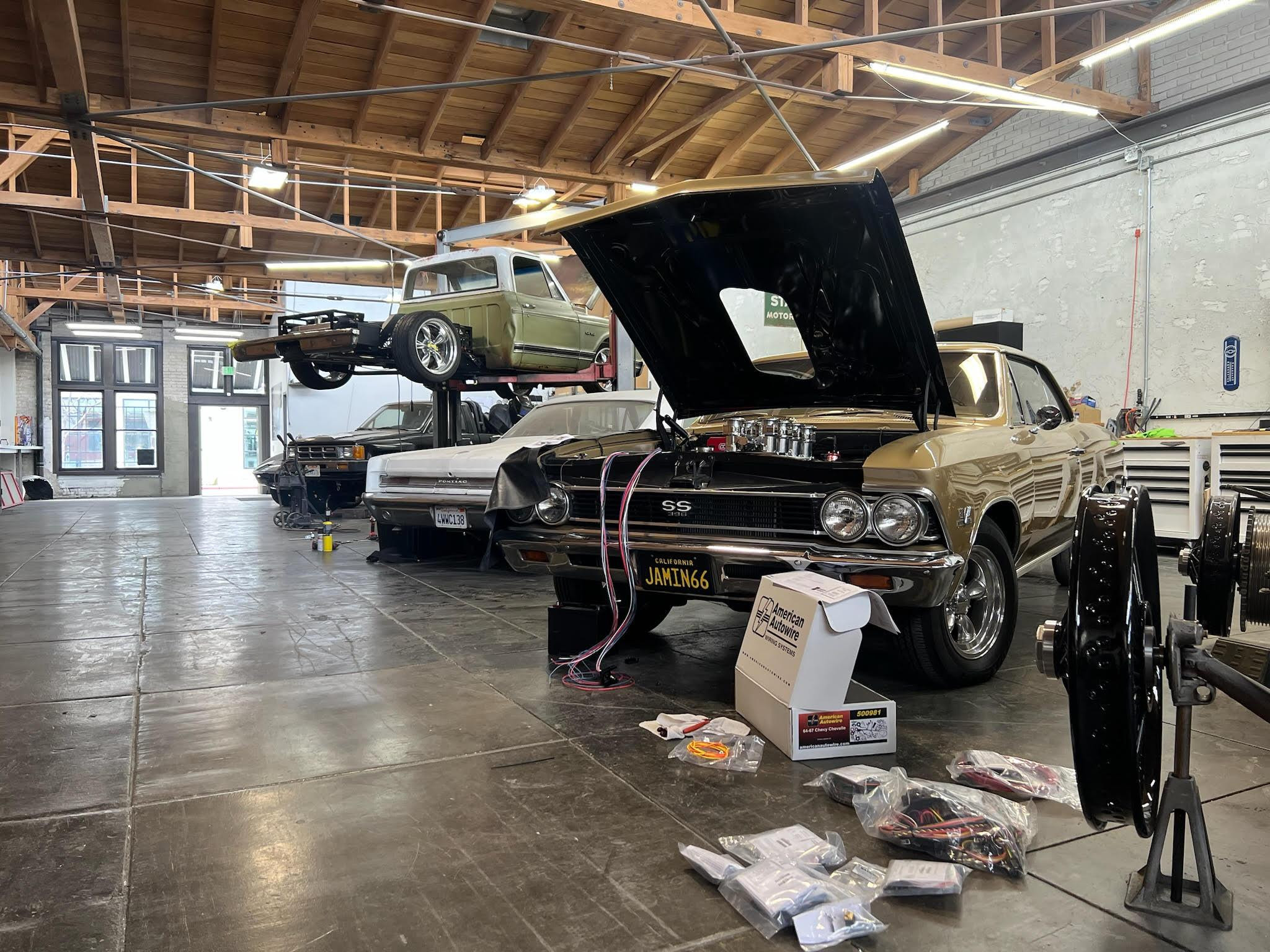 At Roseleno Inc., four people in-shop build five FBRs or "full-blown restorations" a year, plus mods and other jobs.
At Roseleno Inc., four people in-shop build five FBRs or "full-blown restorations" a year, plus mods and other jobs.
Consider, Messina said, “Ferraris from the late 1950s. Any successful race car gets the shit beat out of it: not the original engine, not the original transmission.
“Well-preserved, unrestored vehicles exist,” he said. After the job: “Original car? That’s up to the world.” For our purposes, know this: a Concours-ready vehicle doesn’t mess around.
Neither do clients.
Customers don’t generally “complain about cost when restoring something worth millions,” Messina said, “but we champion the idea of value. If we can be effective in less time,” with tech, that’s a good thing.
“The internet is definitely your friend” in this, Messina added, and he “sleuths all the corners” of it. Meanwhile, “Tinkercad is free, AutoCAD is expensive,” he said, relative to drawing; Fusion 360 is a third option.
Four people in-shop build five cars a year -- FBRs or "full-blown restorations" -- plus mods and other jobs.
This could be making something “just a little better, all the way over to integrating computer-based mechanical -- fuel injection, 10-speed transmissions when they were born with two-speeds -- and now you need to make the car run without antilock brakes freaking out the computer. Wiring harnesses, modern gauge clusters, digital not analog.
“Anything you can think is in a brand new car, people are putting into old cars.”
Full Spectrum
Or on it. Ken’s Custom Auto Body in Marysville, CA, does no FBRs but often finishes jobs others have begun, mainly Cobra replicas and other muscle cars, said owner Ken Pike.
Pike also paints.
“We paint a lot of cars,” he says. “Between 40 and 50 complete custom paint jobs a year.”
In December, the business, already a quarter century old, moved one town over, buying a vintage building -- a definite plus, he said, for a custom shop -- well-known in the community, and growing it by 5,000 square feet, to 17,000.
The new space went largely to new painting booths -- touchscreens, variable airflow and the like.
His photo spectrometer is the latest -- “less than a year old, and super accurate” -- a web-based program that lets him alter colors at a touch.
“Newer paints might use different pearls and micas in them,” Pike said, and custom customers “might want to match a newer paint.”
Pike “can take a picture, match it to a formula, and alter the formula at will.”
Three or four layers later, bam.
Touch comes into play in an old-school way, as well.
In training his techs, the shop has seven employees, to “learn how to make a panel straight, do block sanding, there’s no way to teach a robot or a machine how to do that; it’s all by touch and feel.”
You can’t teach the tech but can the tech teach you?
Yep.
YouTube. “We watch videos.”
Art for Auto Body’s Sake
That’s an "old" tech fix for old-school tasks in a new day. Danny Knight took it a step farther, in trying to push his one-man shop farther. He made a video of his work, old and new, and posted it to Facebook.
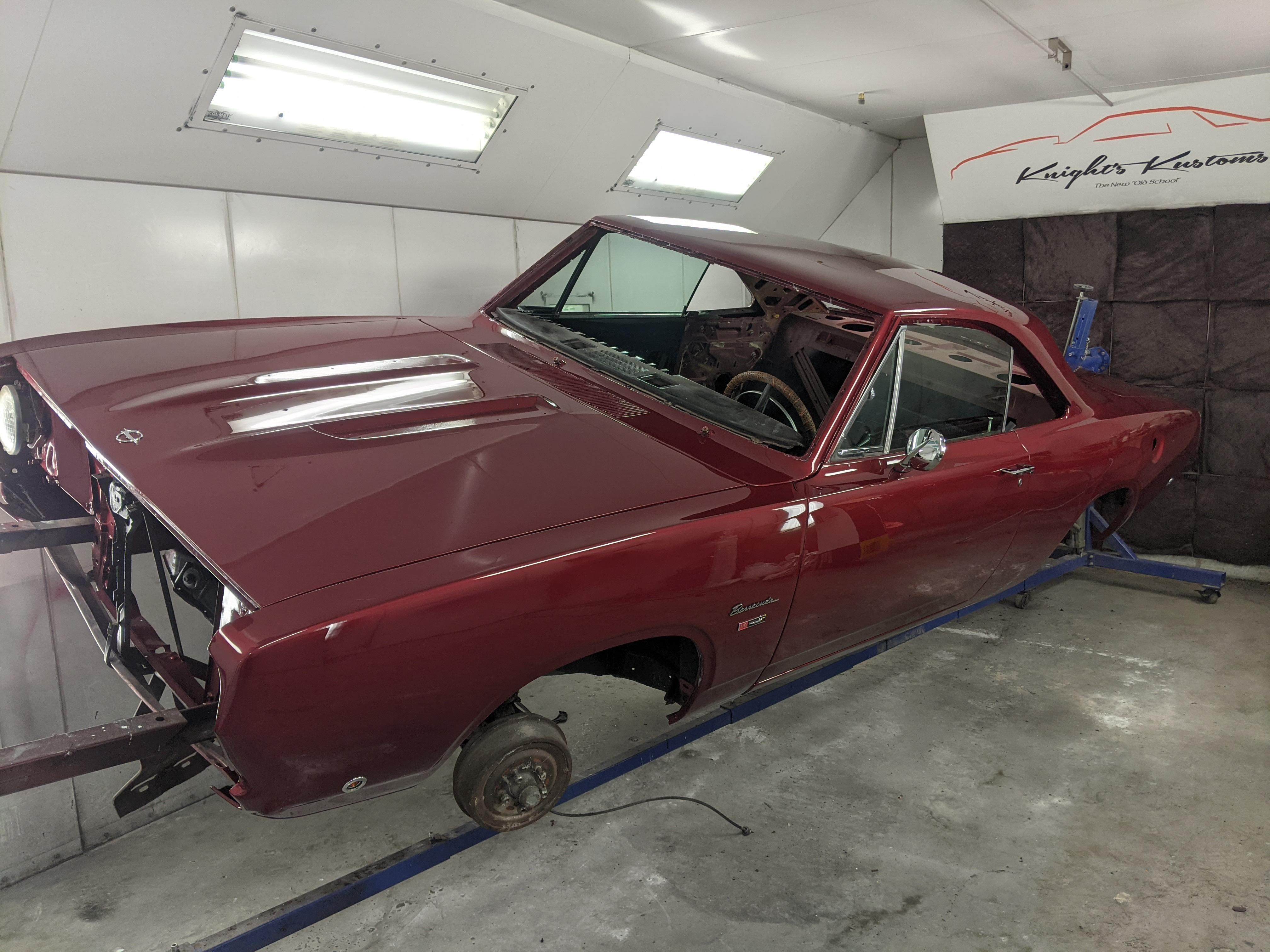 Danny Knight, owner of Knight's Kustoms in Winchester, VA, is finding where auto body tech can go and what it can do in new areas entirely.
Danny Knight, owner of Knight's Kustoms in Winchester, VA, is finding where auto body tech can go and what it can do in new areas entirely.
“I started in collision repair right out of high school,” he said, and wanted to get into painting. Knight put in five years of apprenticeship -- “waiting patiently to move up” -- but never got the nod.
So he rented a small garage and began painting motorcycles on the weekends, making better coin than at his day job, and eventually found his own shop in Winchester, VA, dubbing it Knight’s Kustoms.
“My first car was a Ford Fairlane,” he said. “I’m doing a lot of muscle cars. Did everything the right way, got the city involved.”
The shop’s 4,000 square feet, with, like video aficionado Pike’s on the opposite coast, plenty of painting space.
He’s eyeing larger digs in downtown -- “hip pedestrian area, a lot of that energy” -- but wherever his shop is, this gets Knight into how he’s doing new technology and, proper to the task, thinking different.
While we might think of technology in an auto body shop as doing one task "higher" -- vertically using tech to improve or enhance, or simply accomplish, one thing we’ve always done -- Knight is pushing it horizontally: finding where auto body tech can go and what it can do in new areas entirely.
He’s painted an airplane.
“There’s a lot you can learn from working on cars,” he said. “The welding, the painting.”
He creates custom art -- think 12-foot canvases -- and not just automotive-focused -- think engine block coffee tables -- which isn’t new.
“I want to progress and learn more, new techniques, more about the business, learn about the cars,” he said. “You start to see things differently, come up with different ways” of doing things.
Continuing Ed
Meet Marcy Yanus. A SEMA council director based in Ohio, her work involves education programs delivered around the country on behalf of its members and to the public and body shop industry, alongside the networking and advocacy.
Yanus echoes several voices here on the virtue of 3D printers. They can be used to “clean up messy details -- if you have a lot of wiring that’s necessary but you want a cleaner system, a more streamlined look.” That is, it isn’t only for prototyping. One hot rod shop built a cover for a subwoofer and, for the guitar enthusiast owner, “used 3D printing to make the Marshall logo to put over it and make it look like an amp.”
Like Roseleno in California, some shops go all in on printers, with “two or three going at the same time.”
Scanning the interior upholstery, per D&C in Nevada, is also common. The “precise, detailed measurements -- the slope of the backseat, for instance -- helps body shop owners quote the job and the time it’ll take.” It also cuts waste of material.
Sessions for car owners have included building a hot rod -- why are you doing it, how long will it take -- heck, how you will find a car, which is a lot harder these days than it used to be. Another clearly popular one: installing air-conditioning in a classic.
Huge for operators: navigating social media -- “a total mystery” for many body shops -- and content creation.
And here’s another way technology is altering the custom shop. It’s not just the technology for vehicles, or the complexity of EVs and AVs, but the cars themselves. SEMA this year has a session on “how Gen X and Millennials are changing the restoration market,” Yanus said.
“We think American muscle cars or street rods or the 1930s; that’s not the cars they grew up with,” she said. They might love, for instance, a Honda Civic or Mazda Miata, or this Toyota Celica beauty.
“My group will also be at the Japanese Classic Car Show, and that’s coming into the restoration segment.”
Paint Like a Girl
All training and "best practices" exposure is vital, and to a great degree driven by personal desire: ya gotta want it. If you do, there are ways to learn.
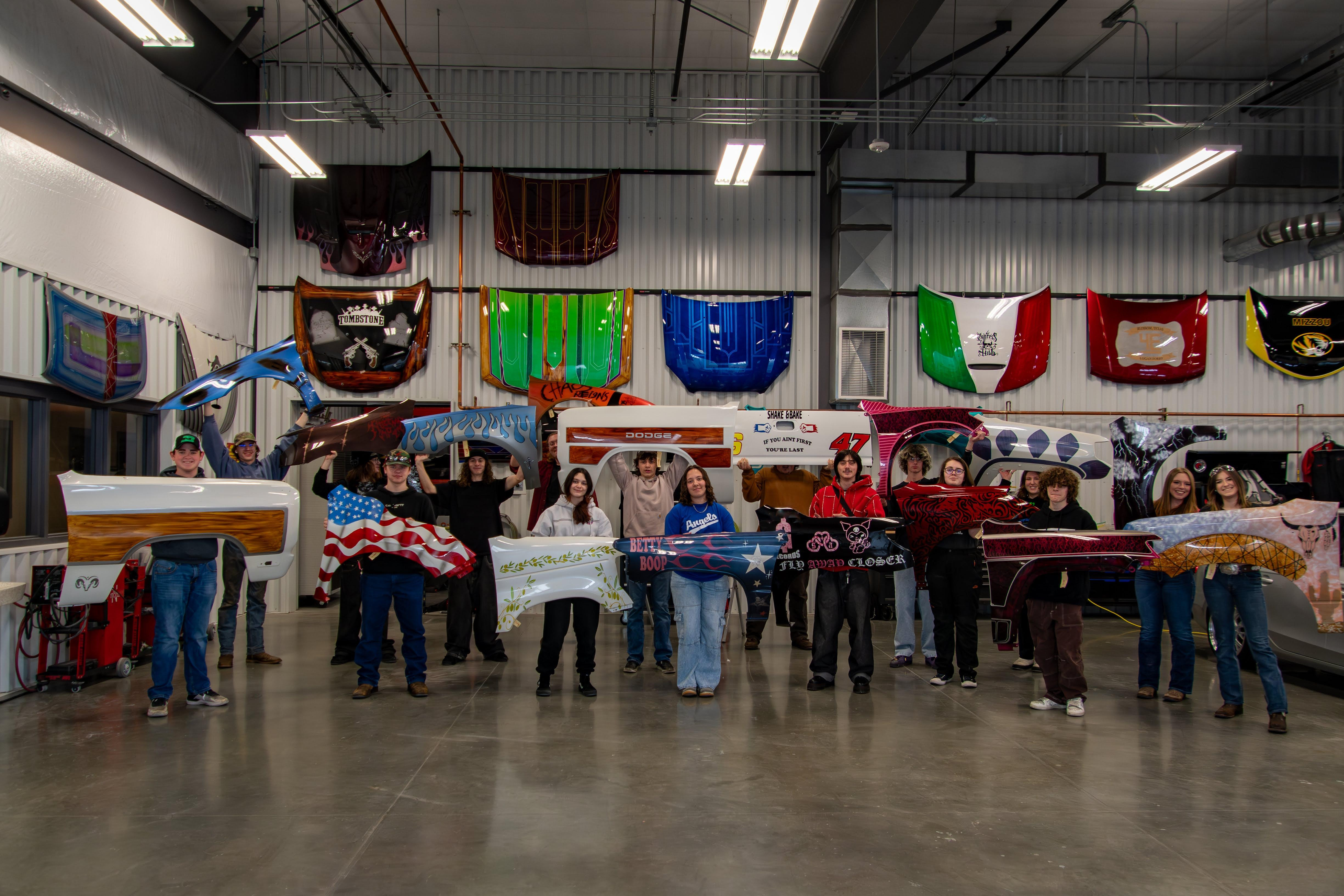 North Idaho College’s Kootenai Technical Education Campus is for high school students.
North Idaho College’s Kootenai Technical Education Campus is for high school students.
“A fun portion, to promote creativity and do metal work, is they bring in a fender, work the dent out, then do a custom paint job,” said Andy Rogge, an instructor for North Idaho College’s body shop training in Rathdrum. “She took it and ran with it.”
"She" is Keaton Lee, a former student of Rogge’s at NIC’s Kootenai Technical Education Campus, which is for high school students. Lee now has an LLC, and has done work for both the local Harley-Davidson dealer and clients who show their custom bikes.
All this within about a year.
“We tend to train on the insurance side; that’s where the jobs are. But if they learn the skills, it transfers," Rogge said.
He cited motorcycles, like Lee, and avionics, like Knight, and specializing in painting, like both.
The car community in Idaho is relatively smaller compared to other states but punches above its weight, per capita, he said. And because you have fewer people doing custom work, you can stand out.
Still, ya gotta want it.
“It takes the right type of person. You have to work seven days a week, and have that attention to detail," Rogge said.
All Hands
If you’re gonna do this, you gotta keep up. That applies to technology, training, lifelong learning and the cars themselves.
It’s a spectrum, and you need to be on it. You must, in that old sense of full integration, comprehend it.
Ronning in Reno, for instance, is considering his next tech purchase: “a bigger laser scanner. That way you can map out a chassis and build the whole thing in CAD. Right now, we’re doing parts and pieces as we go.”
But as much as a shop moves forward, it can’t lose sight of present or past. Past is easy, operators say: that’s what their work is. Present, meanwhile, is the ongoing why: the elegance, the solutions, the beauty, even the love.
They overlap, too: present is the work; past is the history of that work -- a history made with hands.
“Technology goes a long way,” said Ronning, “but keeping it old school helps keeps the tradition alive. You have upgraded sheet metal, the technology and tooling is better, your tools help you, but you’re still out there doing it, molding it.”
"Adapt or Die" looks great on a T-shirt, but if you adapt too much you might as well be dead.
“That’s what it comes down to for us, the time and energy and effort,” he said.
“You can plot it on a computer, look at it, make it one way or the other, but it only comes out as good as the guy doing it,” he added.
CAD “looks super cool” but sometimes “you take that drawing and throw it in the trash and roll with where you need to be.”
How it looks doesn’t match with what you touch, what you feel.
It doesn’t -- literally -- fit.
“The hands are the ultimate technology,” he said.

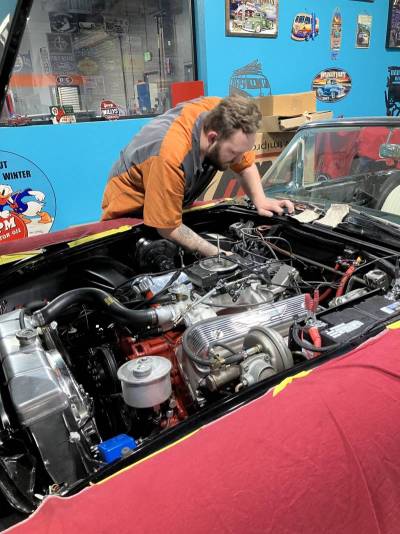
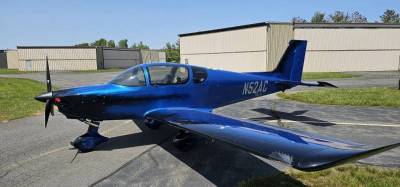
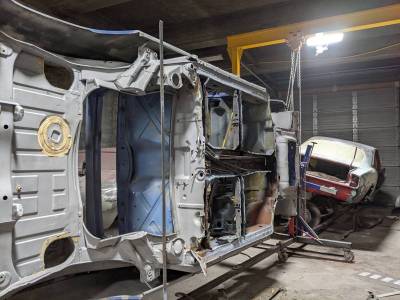

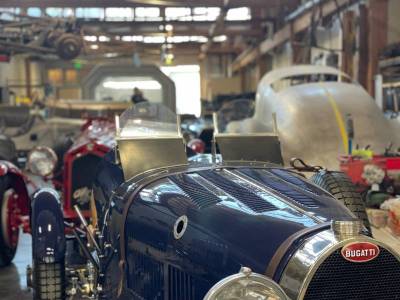
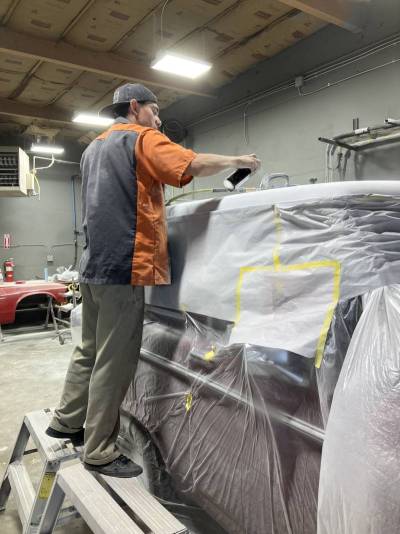
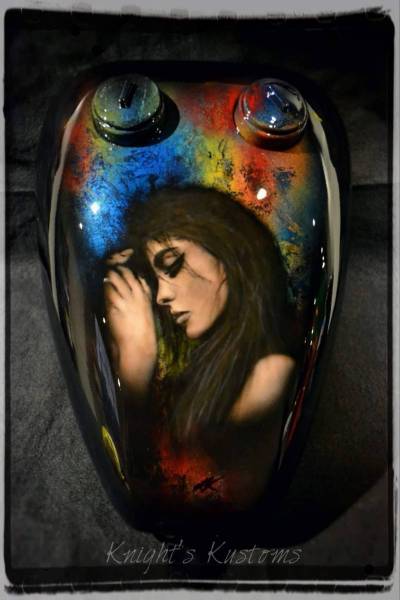















Paul Hughes